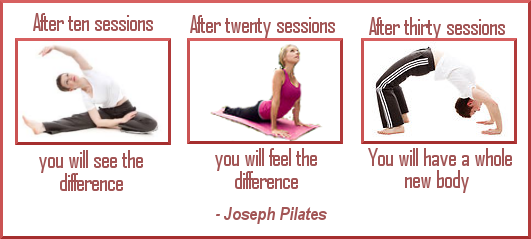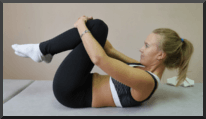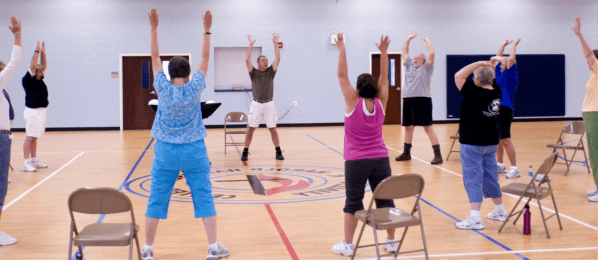Pilates – The Safe Way To Fitness

Pilates, pronounced pih-lah-tees, was designed by Joseph Pilates, a physical-culturist from Mönchengladbach, Germany. Originally called “contrology”, he developed it it during the early part of the twentieth century, believing that mental and physical health are interrelated.
Pilates was a sickly child and suffered from a number of debilitating conditions including asthma, rickets, and rheumatic fever, and he dedicated his entire life to improving his physical strength.
Through studying body-building, yoga, and some forms of martial arts, by the age of 14, he had overcome his childhood ailments and came to believe that the so-called “modern” life-style, bad posture, and inefficient breathing lay at the roots of poor health.
Being both a gymnast and inventor he ultimately devised a series of exercises and  training-techniques and engineered all the equipment, specifi-cations, and tuning required to teach his methods properly. And so the Pilates way to physical fitness was born.
training-techniques and engineered all the equipment, specifi-cations, and tuning required to teach his methods properly. And so the Pilates way to physical fitness was born.
Now practiced by millions of people globally, it was originally designed as rehabilitation exercises for athletes and dancers, and most fitness experts agree it is of the most rewarding types of exercise because it encompasses stretch and strength exercises and improves flexibility in the safest way while avoiding injury.
Why Pilates?
Regardless of whether you are twenty or sixty years of age, Pilates can work for anyone – men or women, young or old. No matter what condition you’re in, the health and fitness benefits are endless. Pilates improves flexibility, core strength and range of motion. It is also known to help alleviate chronic health ailments as well as fight back pain.
It’s an exercise that bonds the mind and body allowing them to work together to establish balance. But the biggest benefit is that Pilates improves overall body alignment, making it less prone to injury.
One other big advantage of Pilates is that is all done indoors so there’s no problem with inclement weather and doesn’t require expensive equipment to get started, a floor mat is all you’ll need to start with. You can, if you wish, add more equipment as you become more advanced in Pilates techniques.
Forget jogging, pounding the pavement with the potential risk of getting shin splints, a knee or ankle injury or, even worse, falling and getting an even more serious injury.
You don’t need to hire or purchase high-tech training equipment or join expensive gyms, it can be done in the privacy of your own home as there are many Pilates instructional videos available on line, in fitness equipment stores and video rental shops, or possibly from your local library.
Benefits Of Pilates
There are many health and fitness benefits to be gained from exercising using Pilates, the following are just a few:
- Improves breathing.
- Corrects spinal and pelvic alignment through the concentration of slow, flowing, smooth movements with maximum power.
- Builds long, lean muscles that are less prone to injury, while building strength – without the bulk.
- Improves flexibility and range of motion.
- Improves back and abdominal strength. Increases cardiovascular fitness.
- Creates balance between muscles – as weak muscles become stronger and the strong muscles also gain more strength never over training or under training any particular muscle group. This balance makes it easier to enjoy daily activities with less risk of injury.
- Pilates allows you to retrain your body to move in smoother safer, more efficient patterns of motion, which is essential in optimal performance and overall health.
- There is no pounding or bouncing in Pilates. It is the safest form of exercise. This is why it began as a rehabilitation exercise system for sports athletes and dancers. It is an intense exercise system working all muscle groups but still sustaining and improving overall balance.
In the final analysis it’s all down to the individual and finding the fitness routine that suits them best and gets the desired results without any adverse effects.
